Apple's New iPad Pro Vs. Microsoft Surface Pro 6: Head-To-Head
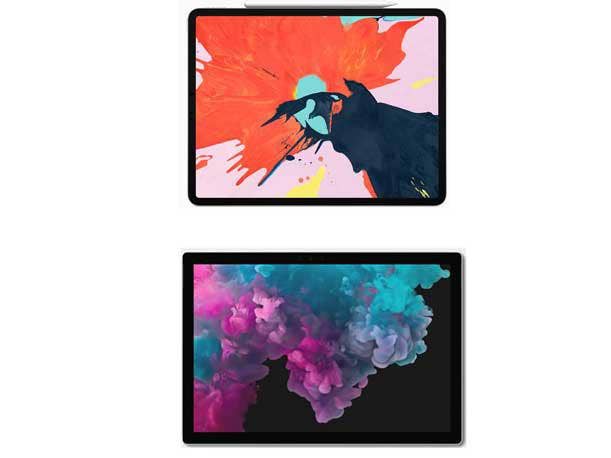
Face Off
2018 has turned into a huge year for the 2-in-1 tablet, with just about every tablet maker launching major new offerings in the category. That includes what are perhaps the biggest names in the space—Microsoft, with an update to its trailblazing Surface Pro line, and Apple, with a new release of its Surface Pro counterpart in the iOS world, the iPad Pro. Both releases have come toward the end of the year—with the Surface Pro 6 and new iPad Pro both rolling out in October—but, better late than never. Which of the 2-in-1 tablets is a better fit for you? In the following slides, the CRN Test Center compares Apple's new iPad Pro vs Microsoft's Surface Pro 6 on specs and price.
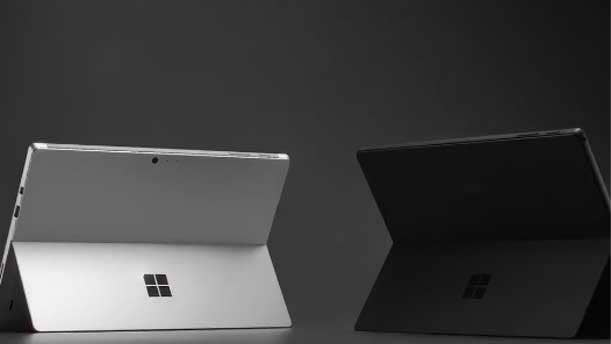
First Things First
While the Surface Pro 6 and iPad Pro are both 2-in-1 tablets, which can attach to a keyboard, in both cases the keyboard is sold separately. In terms of operating system, the Surface Pro 6 comes with Microsoft's Windows 10—either Windows 10 Home or Pro, depending on the configuration—while the iPad Pro runs Apple's iOS 12.
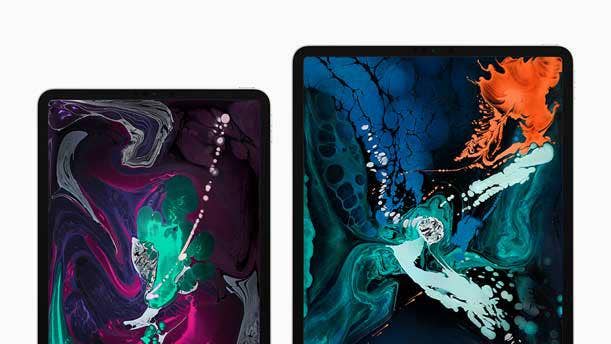
Display
There are two models of Apple's iPad Pro—one with an 11-inch display and one with a 12.9-inch display. By comparison, the Surface Pro 6 falls in between those two models on display size with its 12.3-inch screen.
Both tablets offer bright and colorful LCD displays and high resolution. The Surface Pro 6 offers resolution of 2,736 x 1,824 pixels, or 267 pixels per inch (ppi), for its PixelSense display. The new iPad Pro offers nearly the same ppi as the Surface Pro 6, with 264 pixels per inch, on both sizes of its Liquid Retina display; the 11-inch model features 2,388 x 1,668 resolution while the 12.9-inch model offers 2,732 x 2,048 pixels.
Both of the new iPad Pro models will feature slimmer bezels around the display, and the display view will now switch to horizontal or vertical mode depending on how you're holding it.
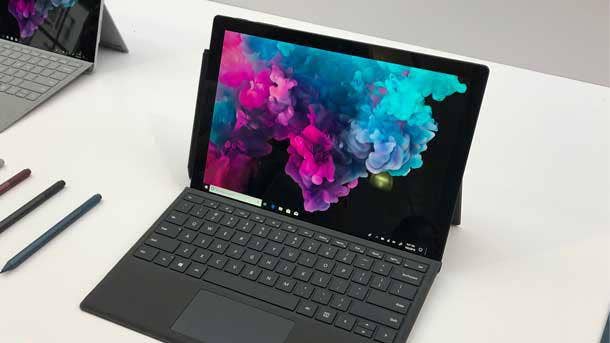
Body & Weight
The most noticeable update with the Surface Pro 6 is that Microsoft has introduced a new matte black color variant. The matte black color joins the platinum color option for the new version of the 2-in-1 tablet. Otherwise, the form factor remains the same compared to previous models. For the new iPad Pro, however, the 12.9-inch model gets a 25-percent lower volume thanks to smaller bezels around the display. In addition, the new iPad Pro actually eliminates a color option (gold), sticking with silver and space gray.
On portability, the 11-inch iPad Pro weighs 1.03 pounds and the 12.9-inch model weighs 1.39 pounds (without the keyboard in both cases). The Surface Pro 6 is a fair amount heavier, at 1.7 pounds without the keyboard.
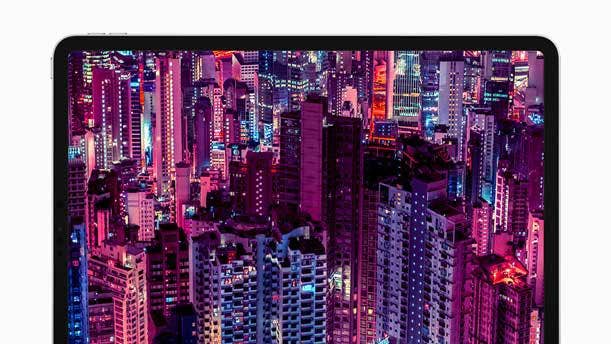
Authentication
One major change with the new iPad Pro is that the tablet switches from fingerprint recognition (Touch ID) to facial recognition (Face ID) for authentication. The home button is also gone on the new iPad Pro, since it's no longer required for fingerprint log-in. As a result, the iPad Pro now uses the types of navigation gestures used on the iPhone X and XS. The Surface Pro 6 also offers facial recognition for authentication, via Windows Hello.
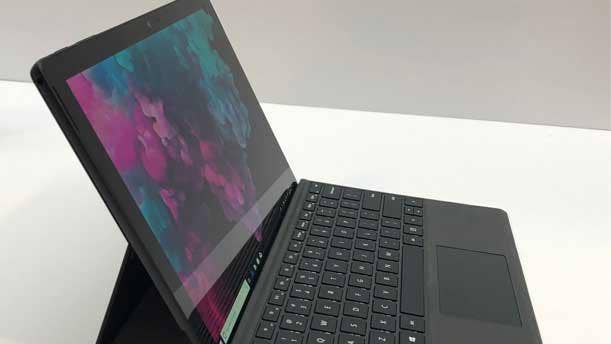
Performance & Battery Life
Performance on the refreshed iPad Pro gets a major boost with the inclusion of Apple's new A12X Bionic processor. The eight-core chip includes four cores for high-performance tasks and four cores for battery efficiency on less-intensive tasks. Benchmark scores put the A12X at a base frequency of 2.49GHz, which is well above the base frequency of the processors offered in the Surface Pro 6—the Core i5-8250U (1.6GHz), Core i5-8350U (1.7GHz) and Core i7-8650U (1.9GHz). However, the Surface Pro 6 includes a lot more RAM—8 GB or 16 GB, comparable to most business PCs—while the iPad Pro reportedly offers just 4 GB of RAM. Ultimately, both tablets will offer very strong performance.
For battery life, the iPad Pro offers up to 10 hours on a charge. The Surface Pro 6 comes out well ahead here, with battery life of up to 13.5 hours on a charge.
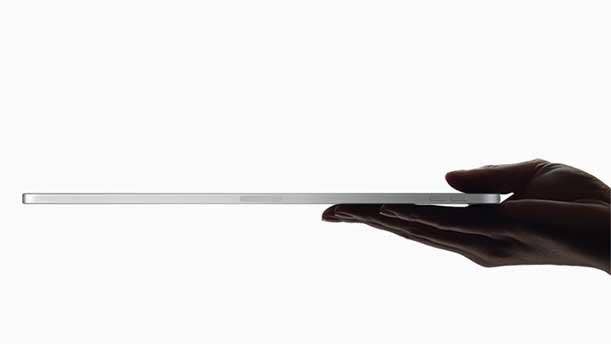
Connectors
The new iPad Pro includes two significant connectivity changes. For the first, the tablet is switching to a USB-C port from a Lightning connector for charging and connecting to other devices. The move aims to make it easier to connect digital cameras, musical instruments and other devices for increased usefulness of the iPad Pro. The second change—which may be less popular—is that Apple has removed the 3.5mm headphone jack on the new versions of the tablet. Apple also retains the Smart Connector for connecting to accessories such as keyboards.
Microsoft, meanwhile, has held off from introducing USB-C connectivity with the Surface Pro 6. Instead, the tablet sticks with a USB-A port, along with a Mini DisplayPort and a microSD reader, as on the previous Surface Pro. Importantly, the Surface Pro 6 does retain the 3.5mm headphone jack.
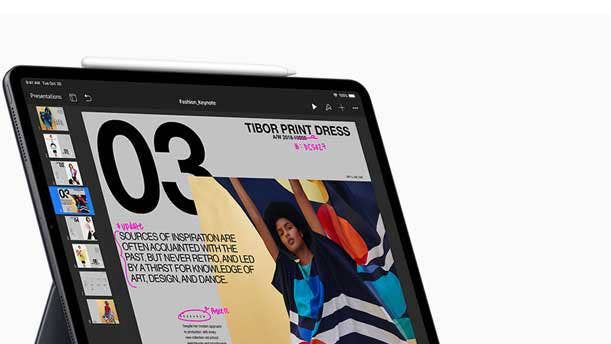
Stylus & Keyboard
Both the iPad Pro and Surface Pro 6 are designed to work well with digital pens, which in both cases are sold separately. For the Surface Pro 6 it's the Surface Pen, while for the iPad Pro it's the Apple Pencil. In conjunction with the new iPad Pro launch, the Apple Pencil has been redesigned to attach magnetically to the tablet and to charge wirelessly while attached.
Apple has also redesigned the iPad Pro keyboard—the Smart Keyboard Folio— with new options including two possible screen angles, for lap and desk use. The iPad Pro smart keyboard still lacks a touchpad, however—unlike the Type Cover keyboard for the Surface Pro 6, which does include a touchpad. Microsoft offers two keyboard options for the Surface Pro 6—a basic Type Cover and the "Signature Edition" with Alcantara fabric around the keys.
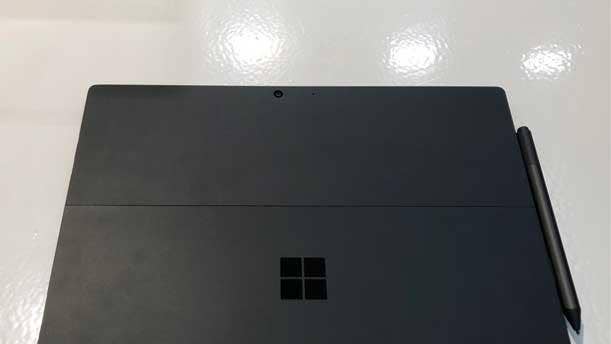
Storage
Apple offers four storage options for the iPad Pro, starting at 64 GB. Other configurations include 256 GB, 512 GB or 1 TB. By contrast, Microsoft starts the Surface Pro 6 at 128 GB of storage—but then offers the same other storage options as the iPad Pro (256 GB, 512 GB or 1 TB).

Price & Bottom Line
A direct comparison on prices between the Microsoft Surface Pro 6 and new Apple iPad Pro is tough for a few reasons—particularly, the different screen sizes and storage configurations. The cheapest tablet in our comparison is the 11-inch iPad Pro, which starts at $799. The Surface Pro 6 starts at $899. However, that pricing for the Surface Pro 6 gets you twice the storage (128 GB) and a much larger display (12.3 inches versus 11 inches).
For the 12.9-inch iPad Pro, you'll need to shell out $999—$100 more than the starting point of the Surface Pro 6—and that will still get you just half the storage on the Surface Pro 6. But of course, the display is bigger on the 12.9-inch iPad Pro than on the Surface Pro 6. So, trade-offs abound. Ultimately, though, Microsoft's Surface Pro 6 does seem to be a slightly better value for the money when you also factor in the longer battery life, greater storage and the inclusion of a headphone jack and touchpad on the keyboard.